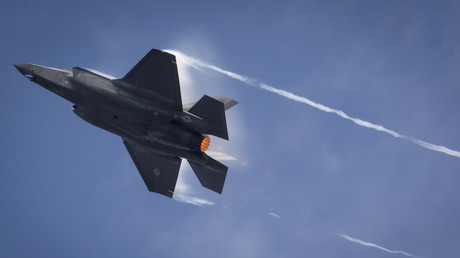The figures from the last fiscal year, which stood at $41.9 billion, have already been surpassed by $5 billion and were reached in just the first two quarters of 2018, Lt. Gen. Charles Hooper, Defense Security Cooperation Agency (DSCA), told Defense News at the Farnborough International Airshow in the UK.
“Defense exports are good for our national security, they’re good for our foreign policy. And they’re good for our economic security. And as the administration and our leadership has said, economic security is national security,”Hooper said.
Read more

The Trump administration views arms trade as one of the main driving forces to assure the growth of the US economy. Earlier this week, the State Department announced its action plan to implement the Conventional Arms Transfer policy (CAT), which adds “economic security” as a factor when the government is considering the approval of arms sales and urges the executive branch to more aggressively advocate on behalf of the US defense industry in its competition with Russia and China.
“So I think the overwhelming response to these changes from our partners has been very positive. In fact, now they’d like to know: ‘How this is going to affect me, how can I take more advantage of receiving the best equipment and best capabilities from the United States?’” the DSCA head said.
However, Defense News said that the buyers of US weapons expressed concerns at Farnborough over Trump’s general economic policies, including the introduction of harsh tariffs on steel and aluminum against the EU, and said that the industry was currently in “wait-and-see mode.”
When addressed on the issue, Hooper replied that he “personally [has] not encountered” such attitudes.
“I have talked to many of our partners from around the world and of course our partners in this part of the world, and many of them remain convinced that the U.S. solutions to their security problems are the solutions they’re looking for and the best solutions to their problems,” he said.
Defense News also pointed out that this year’s high arms sales weren’t entirely due to the current administration, as a significant part of the sum came from deals that were signed under Obama, but were closed in 2018. The publication also said that defense total figures have a tendency to fluctuate year by year, saying that they stood at $47 billion in the fiscal year 2015 but then dropped to $33.6 billion a year later.
Also on Friday, America’s largest business lobby, the US Chamber of Commerce Defense and Aerospace Export Council (DAEC), voiced its satisfaction over the planned implementation of CAT.
The council president, Keith Webster, described the White House initiative as “a major first step toward improving government decision processes and policies.”
The Conventional Arms Transfer includes policy changes prioritized by DAEC that will “improve bid timeliness while reducing costs to industries, place emphasis on economic considerations in the federal transfer decision process, and expand trade promotion," Webster said in a statement.